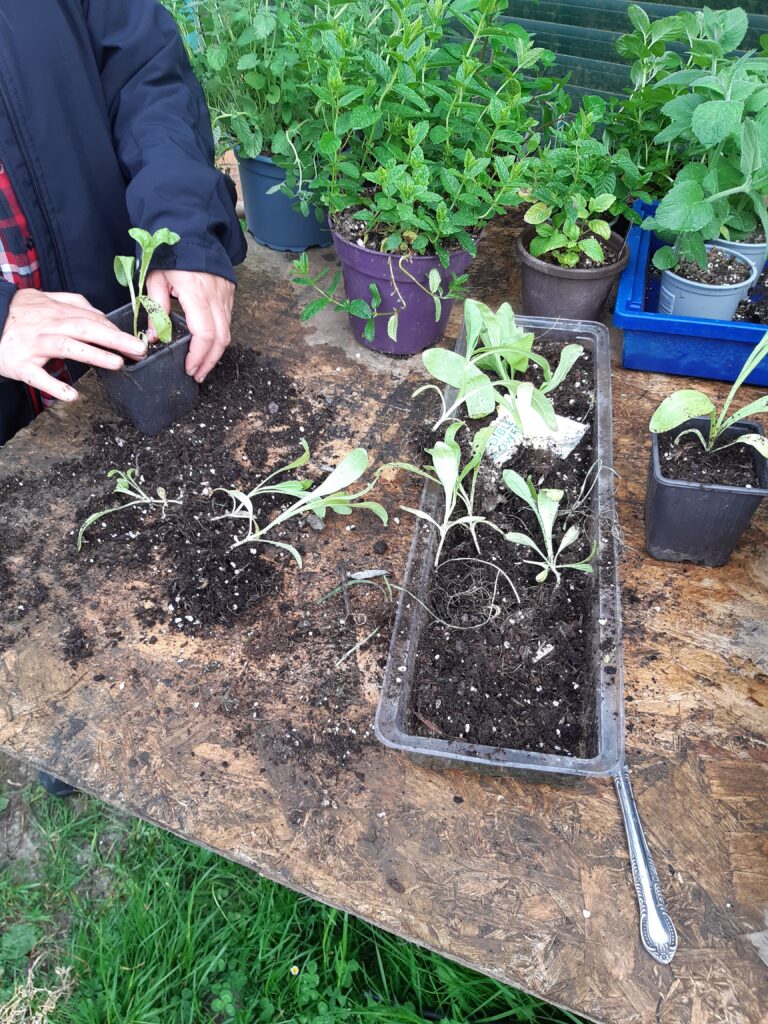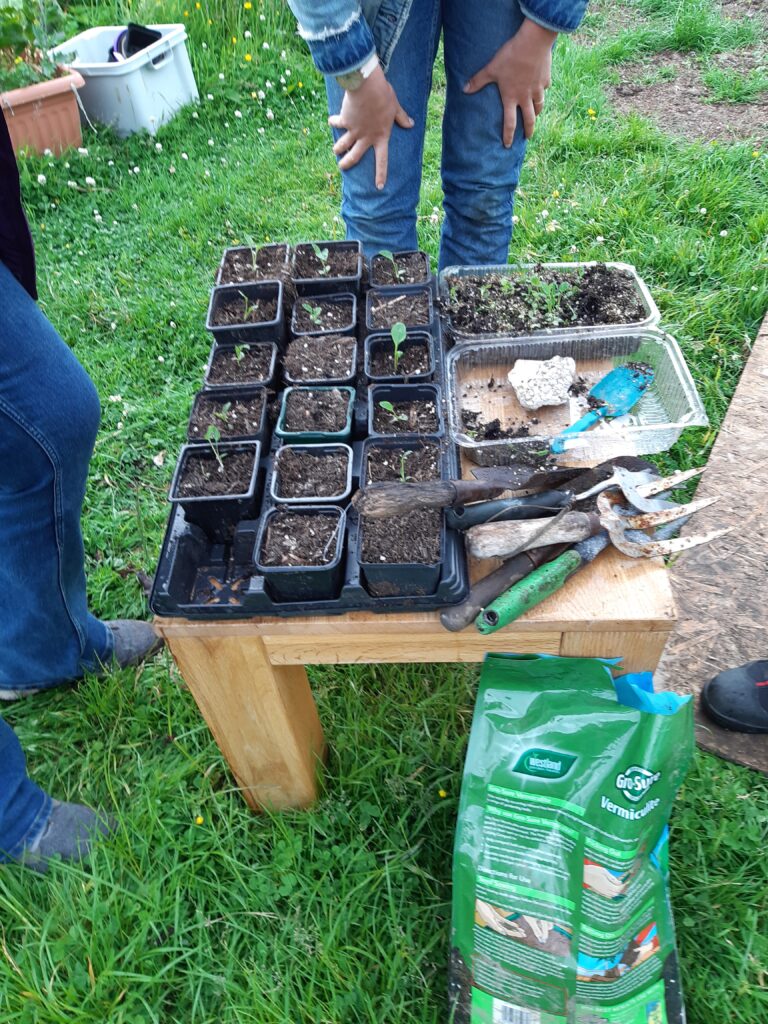Wood chips and tomato bed
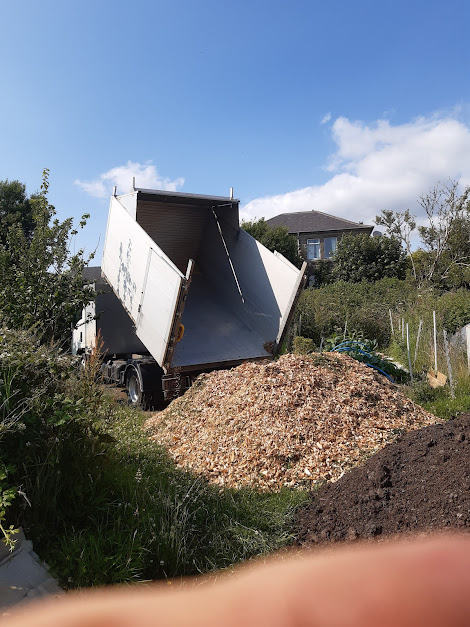
Chips being delivered by 247 Tree Surgery 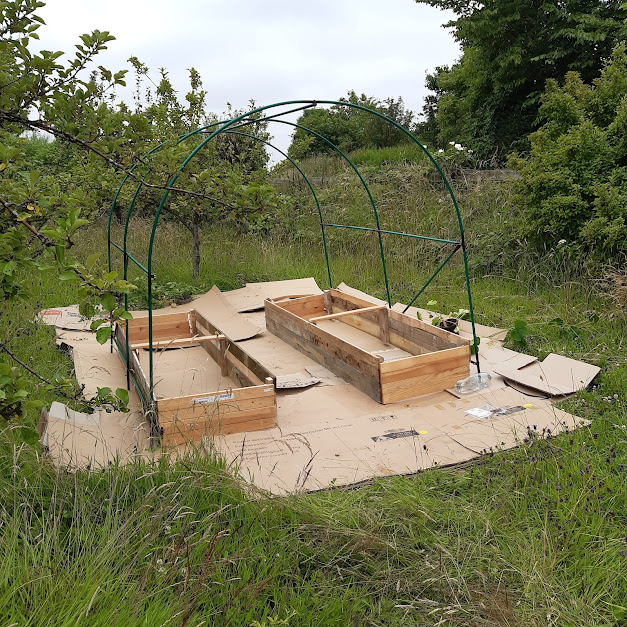
Beds made with pallets on cardboard 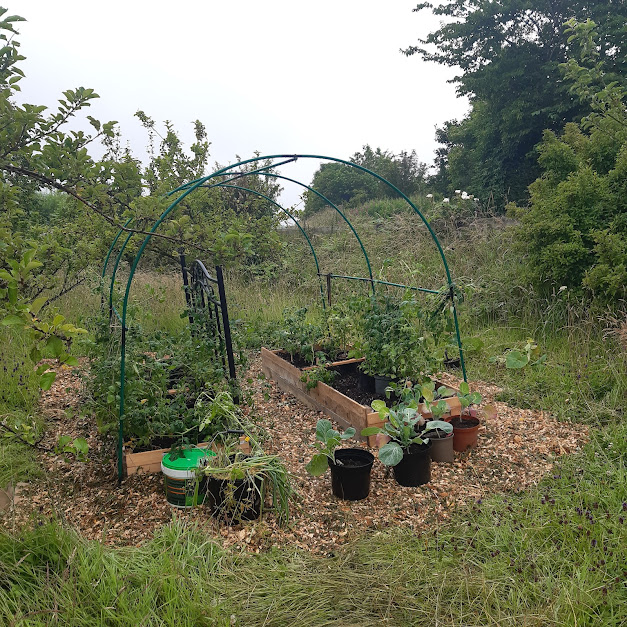
Planted up with wood chips finishing off the bed 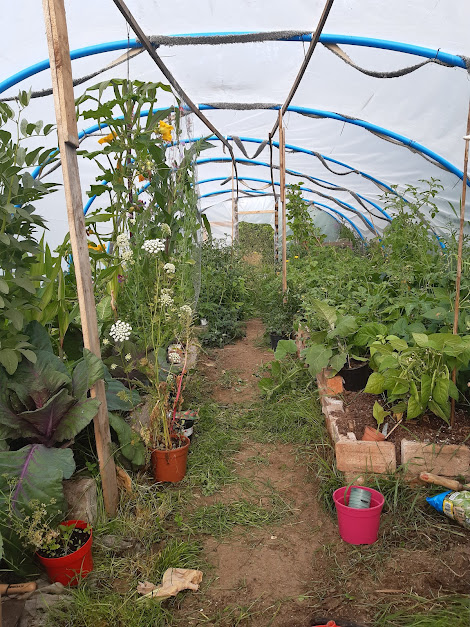
Poly Tunnel before 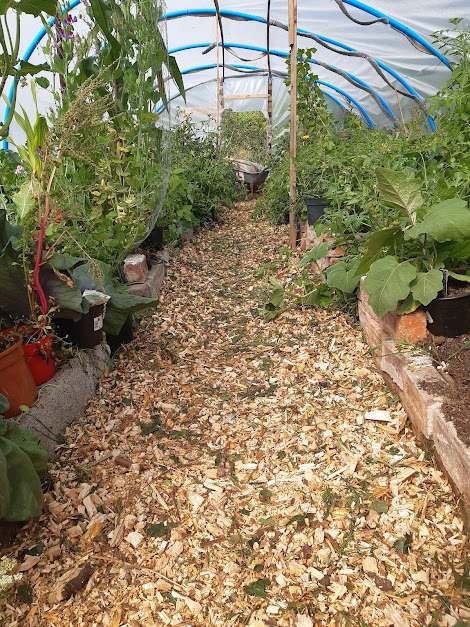
What a difference
Free Beginners Workshop
What is covered?
Everything for the course is provided although A few have regretted not bringing a notepad. The backdrop of these workshops is low cost, organic and demystification by explaining rather than rote learning. Korean natural farming is introduced and discussed in all the workshops. Details from upcoming workshops are discussed if relevant. Most of the time, I over-plant, so have seedlings to give away.
Powerpoint and whiteboards are not used, rather a show, tell and in some cases actually doing. Each week you can see what’s happening in the Sanctuary Garden. If there is produce you can taste raw, you get the chance to do that too. Bring a coat or jumper just in case the wind picks up.
Tea and coffee is available, you can make it to your desired strength and sweetness. In workshop #4 we’re in the kitchen and you’ll get to taste and enjoy produce from the garden and if I can, we can compare it against shop bought.
The donations we get, are spent on big things like water pumps and truckloads of compost. Seeds and plants are often donated or they are in “stock”. Grant is not paid, he’s loves pulling things out of skips, picking up free second hand pots and tools. His time putting the courses together and teaching are gratis. Most of the produce grown is either eaten on site or donated to food banks. The plants and Korean natural farming ‘liquids’ you take home are free too.
To sign up, just click this link, you can easily unsubscribe.
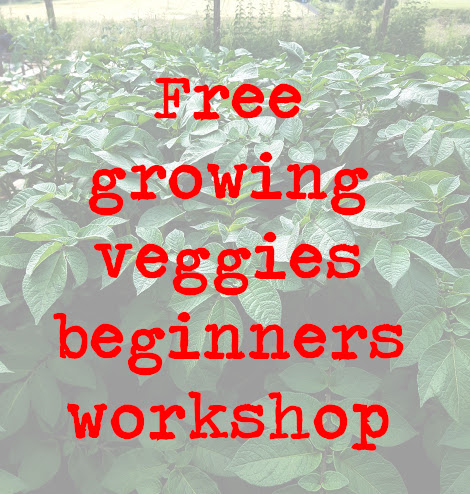
Workshop #1.
We go through how not to kill a plant, what kills seedlings and seeds. Types of compost, how to use vermiculite and perlite, sowing seeds, how and when to water. Choosing pot sizes for seeds, seedlings and final sized pots. What are smart pots, root bound plants, how roots and stems grow, preventing lopsided plants, and feeding plants.
If the weather is good, it’s all done outside, it’s touchy feely, interactive and the reasons why are explained to help demystify growing plants. We touch on how to grow veggies without spending a fortune on tools, pots, compost and seeds.
Workshop #2
Is hands on, you get to transplant some seedlings, of various sizes into pots. The tools you don’t need to buy, root size, when to plant out or pot on seedlings. How to grow herbs from live supermarket herbs that usually die by their ‘sell by’ date. Show how to take cuttings, plant them and talk about successes and failures.
Workshop #3
This is the details of some of the things touched in earlier workshops. We how to choose veggies, where to plant them in a bed, squarefoot planting, living soil, soil amendments, easy composting, pest control, raised beds and weeding. Saving seed, cross pollination and F1 seeds are covered too.
Workshop #4
This is a tasting experience, showing how to make pesto, hummus, lemonade, cookies with mint from the garden and how to oven dry cherry tomatoes, amongst other things. My recipes are probably a little more relaxed than Jamie Olivers, I used words like ‘a skoosh’ ‘dollop’ ‘handful’ but in most cases you’ll see the raw ingredients.
Workshop #5
How to plan what to grow and when. How to keep track of what’s in the garden, what to harvest and put seeds into soil. Depending on time of year, will depend on what’s covered, but will be the basis of planting all year round. For those of you who are super organised, you can take these simple systems further, I’m not a fan of paperwork or keeping on top of it but this works for gardeners rather than book keepers. It doubles as a planting reminder, journal and reference.
Wednesday Workshop #4
With brooding rain clouds and a forecast that confirmed rain, I moved the workshop into the kitchen. How to cook veggies and use herbs was a big part of the discussion of the last workshop so it was fitting. As I’m a mint fan and not really sure what to use mint with, other than in gin and mint sauce, I decided to find some recipes that used mint. All the recipes are by feel, so there are no real quantities.
Courgette, pea and mint soup.
Sara, my wife gave me the recipe and it is great hot or cold.
Chopped up courgette, I used 2, a hand full of pea pods from the garden, about a hand full or so, and covered with water and boiled gently until the courgette is soft. Emptied the contents into the liquidiser added the leaves of three stalks and wizzed. Served.
Hummus in 2 minutes
Open a tin of chickpeas, drian the liquid and add the liquidiser, squeeze the juice of half a lemon, add a little rind, a fat clove of garlic, a dollop of unflavoured yogurt, a crunch of salt and pepper and wizz. If it’s a little dry add more yogurt. It’s rather nice if it’s not too fine; wizz and adjust taste and consistency. It won the comparison taste test against shop bought hummus.
Beetroot Leaf Pesto
This pesto has been mentioned on many of the podcasts I listen to, so I thought I’d try it for the first time.
Handful of young beetroot leaves, I noticed I have a leaf miner while I was collecting them. Basil leaves, just a few, 100g of pine nuts, but you could easily use half that amount, the top 2/3 of a parmesan (Grana Padano Wedgecheese 160g) wedge, 60-80g as a guess, two fat cloves of garlic, lemon juice from the other half of the lemon and a generous glug of olive oil and wizz to the consistency you like. One of the children who does not like pesto devoured it.
Fresh lemonade
My mother shared this recipe with me, she had it when visiting my sister in law.
2 unwaxed lemons quartered, a generous amount of mint, sugar or stevia tablets (I used about 20) and water. Wizz in the liquidiser until a fine slurry and strain into a jug. Adjust sweetness by adding more stevia or sugar and add water if too sour. Trust me, it is delicious and would probably go very nicely with a spash of gin.
Choc Chip Cookies with fresh mint.
This is a secret recipe, so don’t share it…..;-)
You can halve this recipe.
300g sugar and 300g butter into the mixer and beat until creamed. Add 2 eggs, 3 tsp of vanilla essence, 2 tsp of baking powder, (not bicarb), three or four stalk of chocolate spearmint leaves (or any mint) and beat until mixed. Add 450g of plain flour, 200g of 70% coco chocolate roughly chopped into pea size chunks and mix until just combined together. Roll into balls about with a diameter of about an inch and half or 30/40mm onto baking paper on a tray and bake at 170C in fan oven for 12-15 minutes, just keep an eye on it for your oven. Let them cool, I know it’s irresistible, the chocolate seems to take ages to harden. Viola!
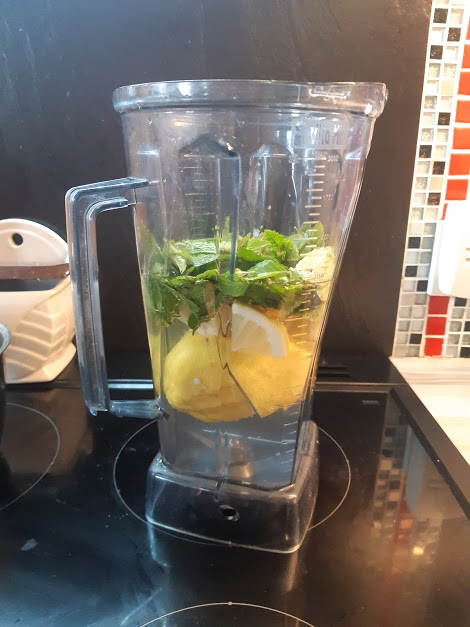
Lemon, mint and Stevia 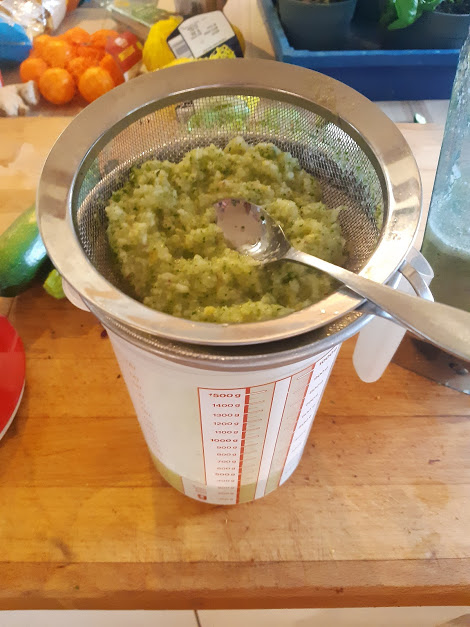
the pulp 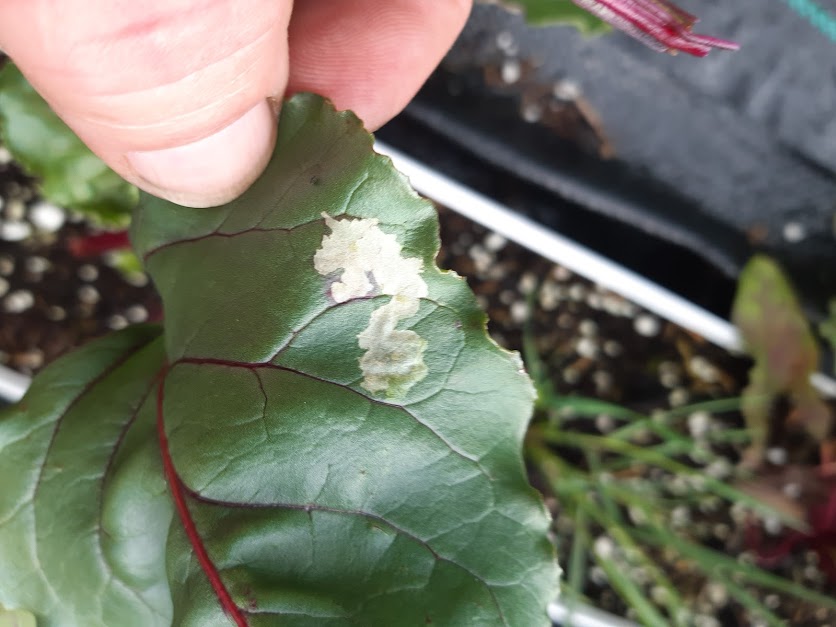
Leaf miner on beet leaf 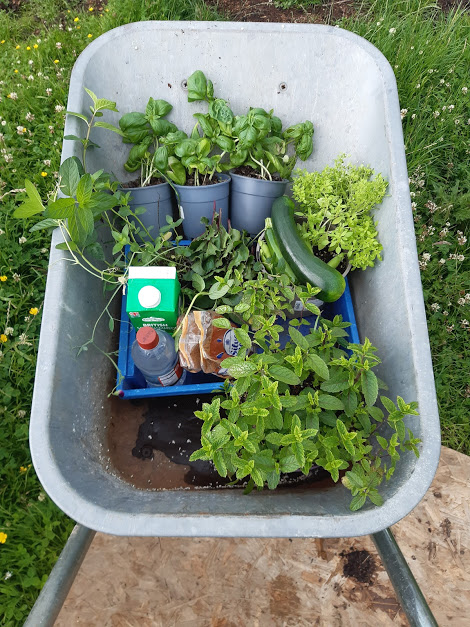
Ingredients from the garden
Helping in the community
Our Saturday workshop went well, numbers are fluctuating; some folks are going away on much needed holidays. We covered transplanting and spent some time discussing Korean Natural Farming (KNF) and we’ll cover that in more detail next week as we did on Wednesday’s course.
A new member of the Saturday group, is delighted with her strawberries and is keen to learn more about gardening. As always, plants were taken home and I later saw a photo of these pots sitting on slabs. I thought perhaps a raised bed would benefit and help keep her momentum going, aid learning and her mental health.
Today it was installed; 6 bags of compost, three of horse manure and a few veggie plants from The Garden, it was all put together and planted up in drizzly weather. My Vietnamese bamboo hat is fantastic for keeping off rain as well as sun.
All the plants will produce something over the summer keeping her interested and eating a variety of veggies.
Broadbeans, artichoke, purple brusselsprouts, lettuces, cabbage, parsley, chives and rosemary. We’ll replace them with overwintering crops when they are done.
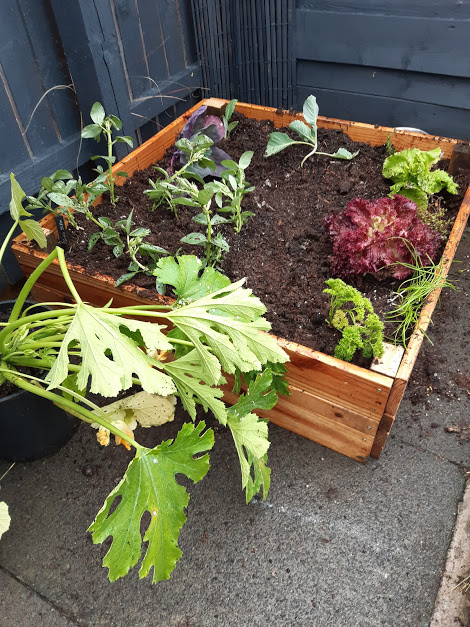
Donation to EATS Rosyth
Today was the first food donation from the poly tunnel and included Kale, courgettes (I think the baby ones taste nicer) baby and mis-shapen swede, rainbow swiss chard and some potted parsley.
Cut and delivered within half an hour.
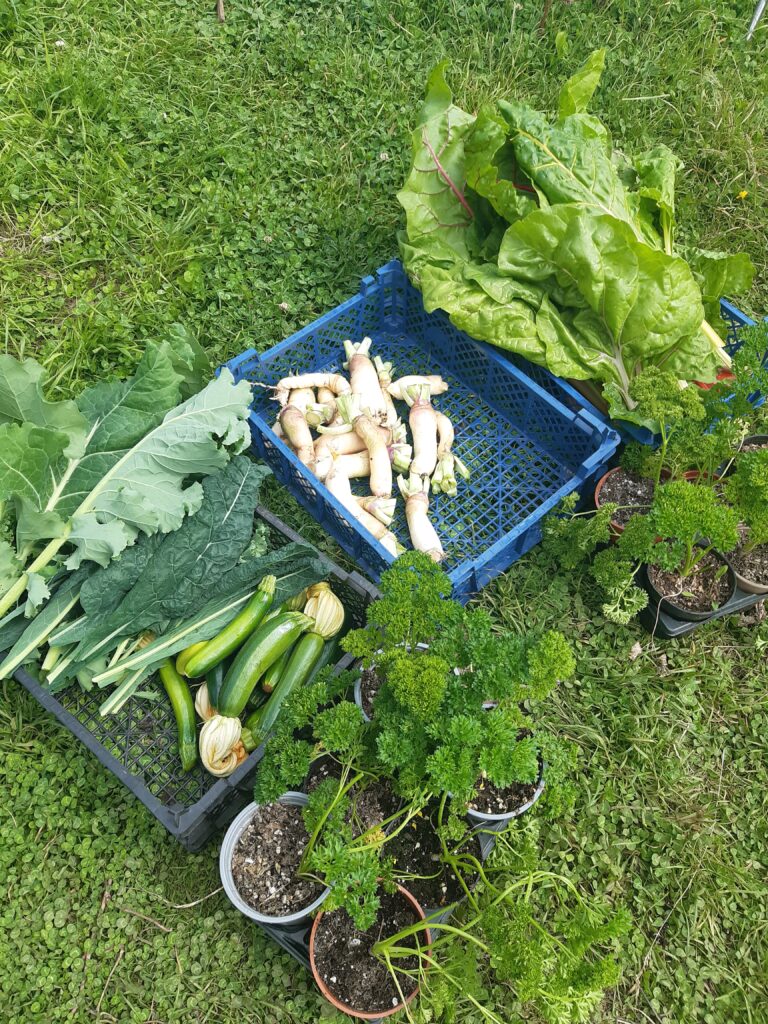
Looking Lush and green
It’s just past the solstice and plants are now producing, growing, flowering and generally looking verdant.
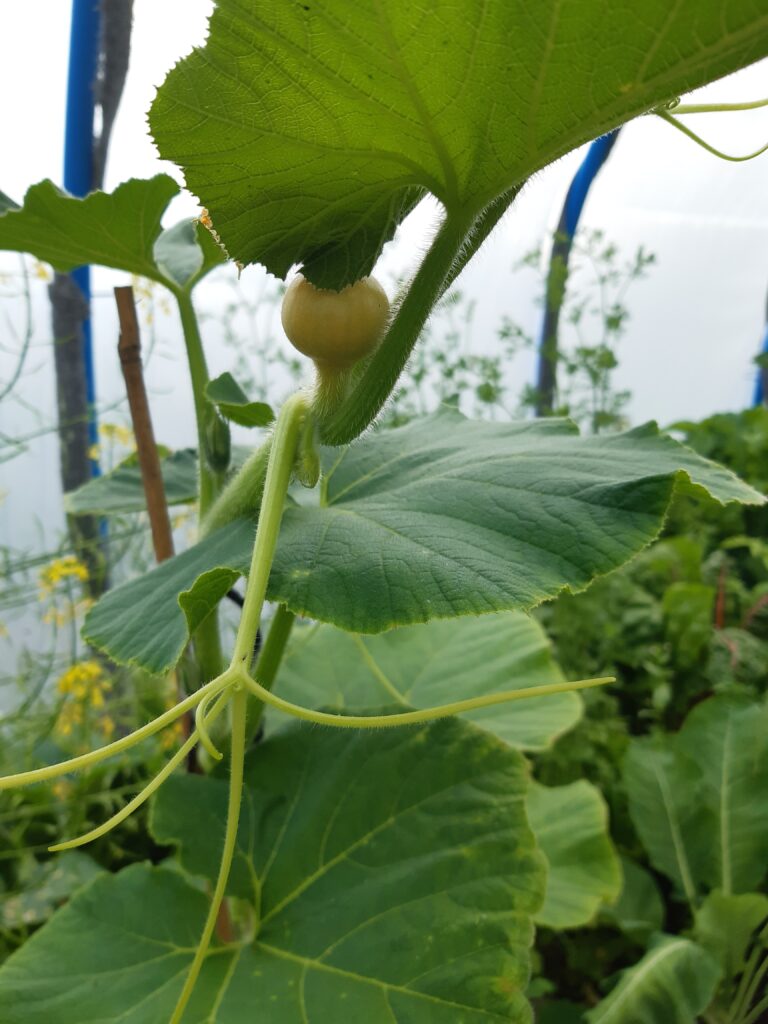
An infant monster pumpkin 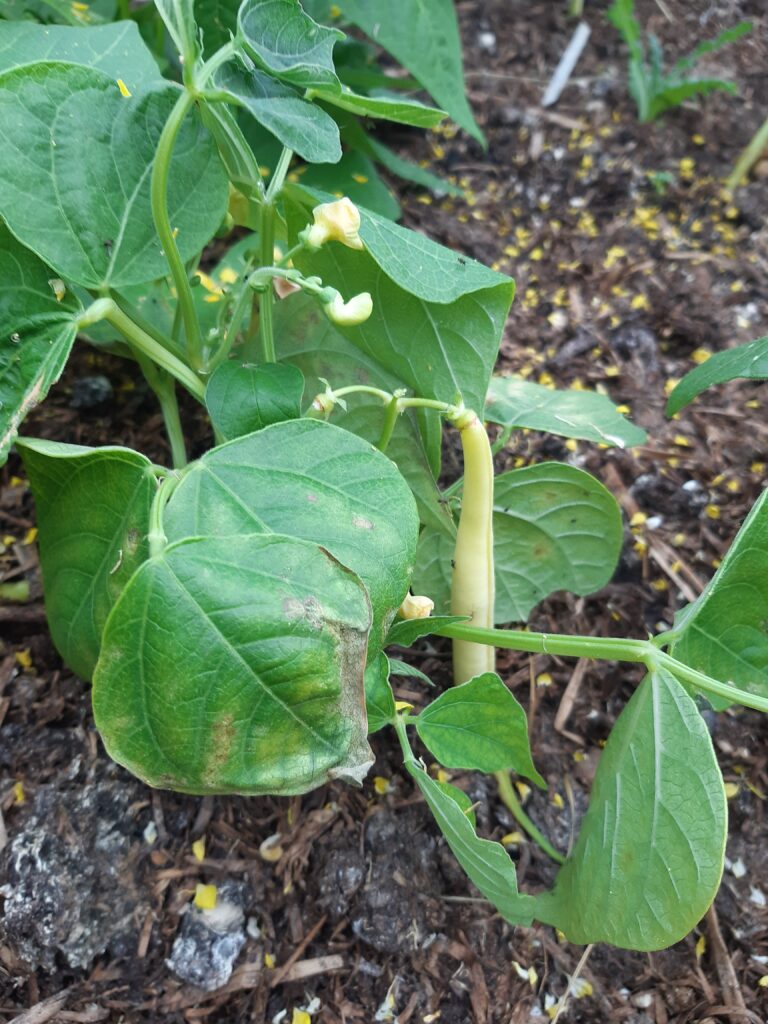
First bean! 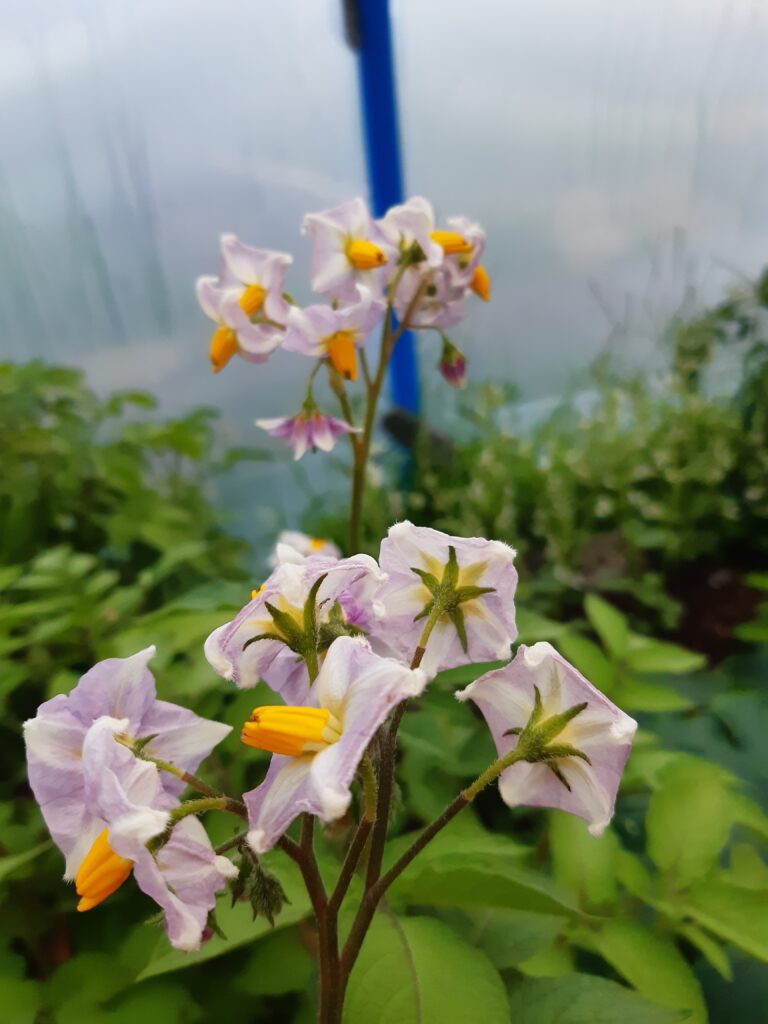
Potato flowers 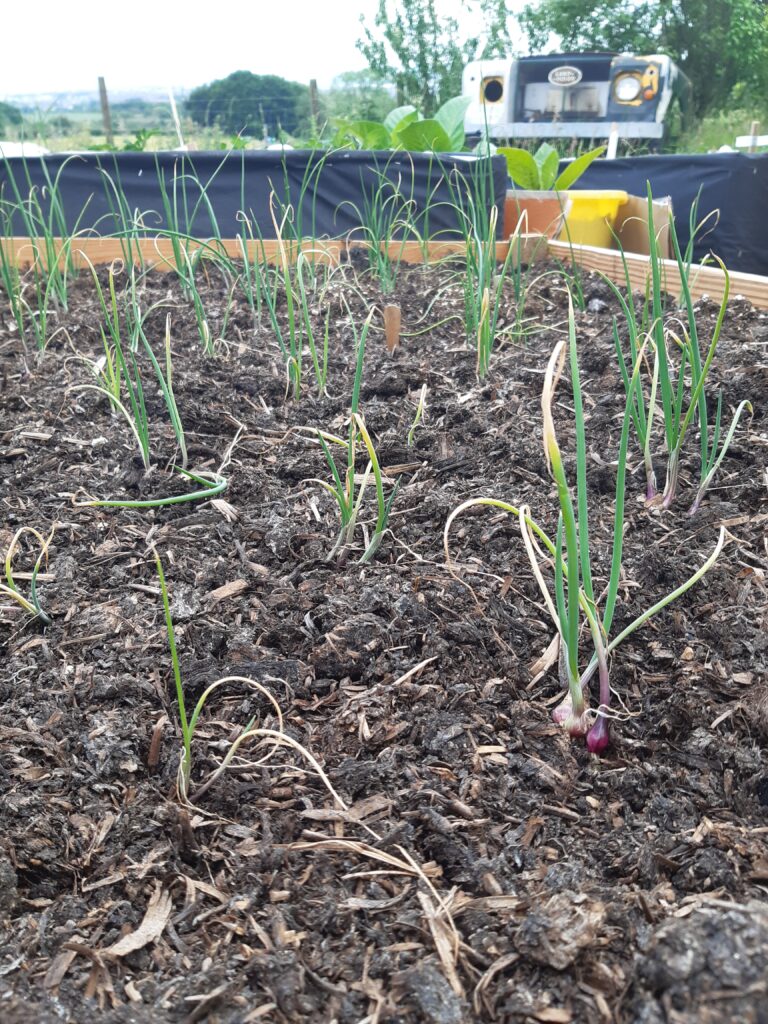
Onions now happier after their transplant 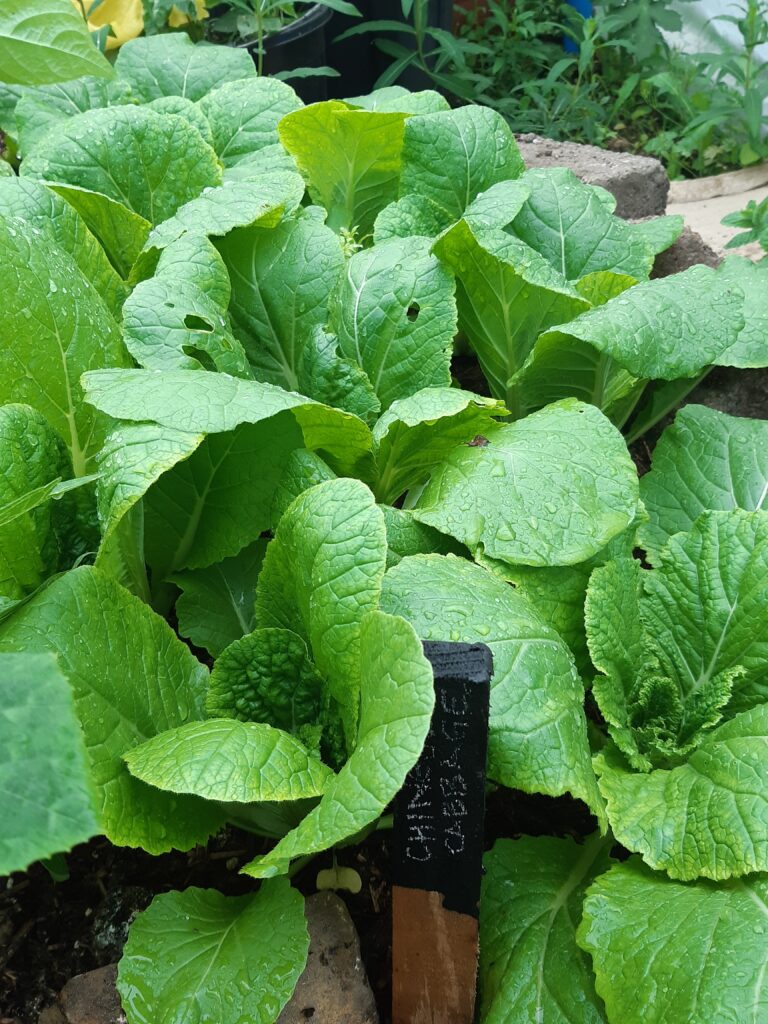
Almost Kimchi
Weekend Workshop 1
Today was the first weekend class. There were five people who attended, with varying degrees of experience. It was a hands off class, I did lots of rambling.
We covered, pots sizes, potting on, compost and adding drainage and moisture retention, seed sizes, how to pot, separate shop bought herbs, touched on Korean Natural Farming and Bokashi composting. Wandered around the site, showing successes and failures, raised beds and different types of potatoes. It was a pleasure and I enjoyed it too.
We over-ran but it was worth it. Next week is a hands on seedling workshop. There are a few spaces left, so please feel free send me a note, I’m expecting it to book up quickly.
Workshop #2
Rather than not expecting anyone to arrive, I was concerned we would be swamped. Turns out there were 10 of us, so under the covid limitation and about the right size. Any more would have been too many, particularly if the rain had stay on.
We covered pot sizes, potting up tiny, medium and large seedlings, potting up a tomato and flat parsley from ASDA. Watering, under and overwatering was discussed and demystified. Seedlings and pots were distributed along with high tech planting tools (teaspoons) and everyone had a go.
My small collection of mint was outside and everyone was invited to pinch off a leaf and enjoy the different aromas. I’ll need to propagate them tomorrow. The chocolate spearmint was popular.
We did a bit of a walk around and I knocked out a pot of Ratte potatoes. They are still wee but it was interesting to see them. It allowed me to talk about overfeeding; nutrient burn, and feeding plant in general.
With trays of seedlings, the gardeners left The Sanctuary Garden. It had achieved one of it’s main goals, lifting spirits. Education although important is not the main goal. My spirits were lifted too, thanks to a wonderful group of people. If you attended today, please would you book your place in next week’s workshop.
Some of the comments included
- I’ve learned more tonight that I have in the past four years
- We had fun
- My plants are still alive
Strawberry bed
This is 3′ square, knocked together quickly with oiled wood and took three wheel barrow loads of compost to fill. I like using a bucket of water to soak the compost before planting and they I water each of the plants after planting. It’s close to the road so I may lose more strawberries to walkers than birds
The jerrycans need to go to the dump. I wanted to make them into little cupboards by cutting around the edge and attach a hinge and snib and then lining it to house a bottle of whisky and a few glasses
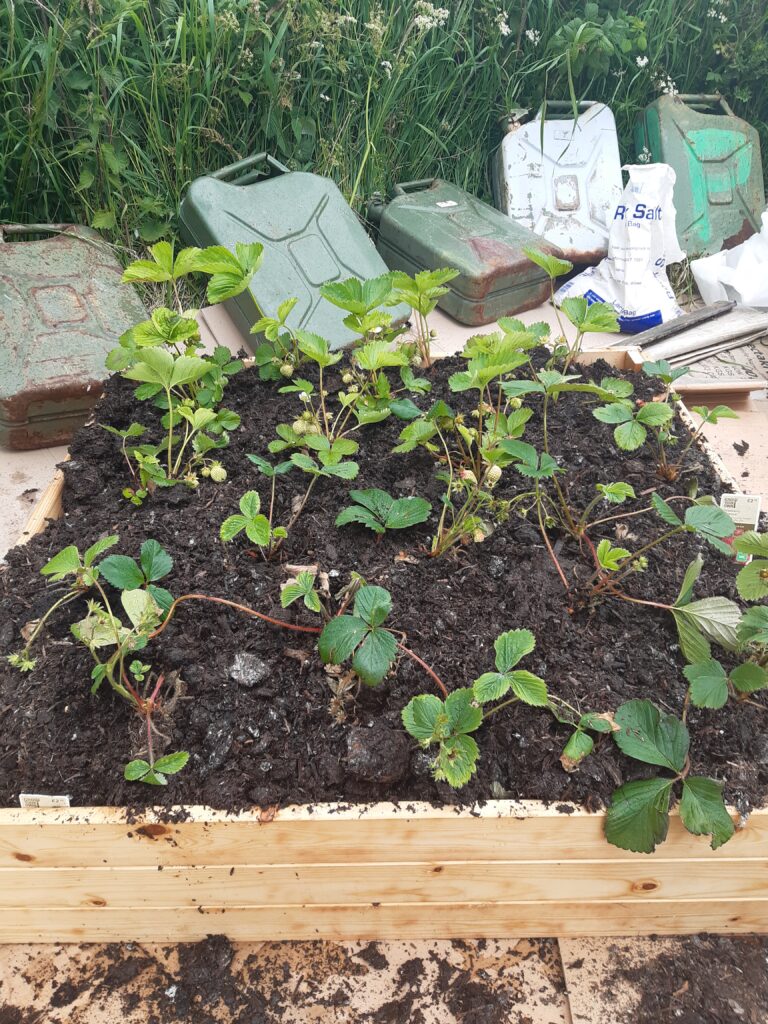
A wee update
The plants are just exploding in the poly tunnel and the seedlings are all needing to be potted up and planted out. I don’t have any more space so I’m using the lawn outside.
Potted up are swedes and cabbages ready for when the early potatoes are pulled up.
Tomatoes for Africa at the moment. Everywhere you look they are growing and blooming. Tomatoes are due shortly. The broad beans are tall and full of flowers and I’ve noticed more flying insects so I’m hoping they are being pollinated.
There was a small section of the potato bed that I’ve used to plant out Pak Choi, hopefully it won’t bolt too quickly.
The wind managed to knock over a seed tray of onions forcing me to make an onion raised bed. They are looking a little sad but should recover quite quickly
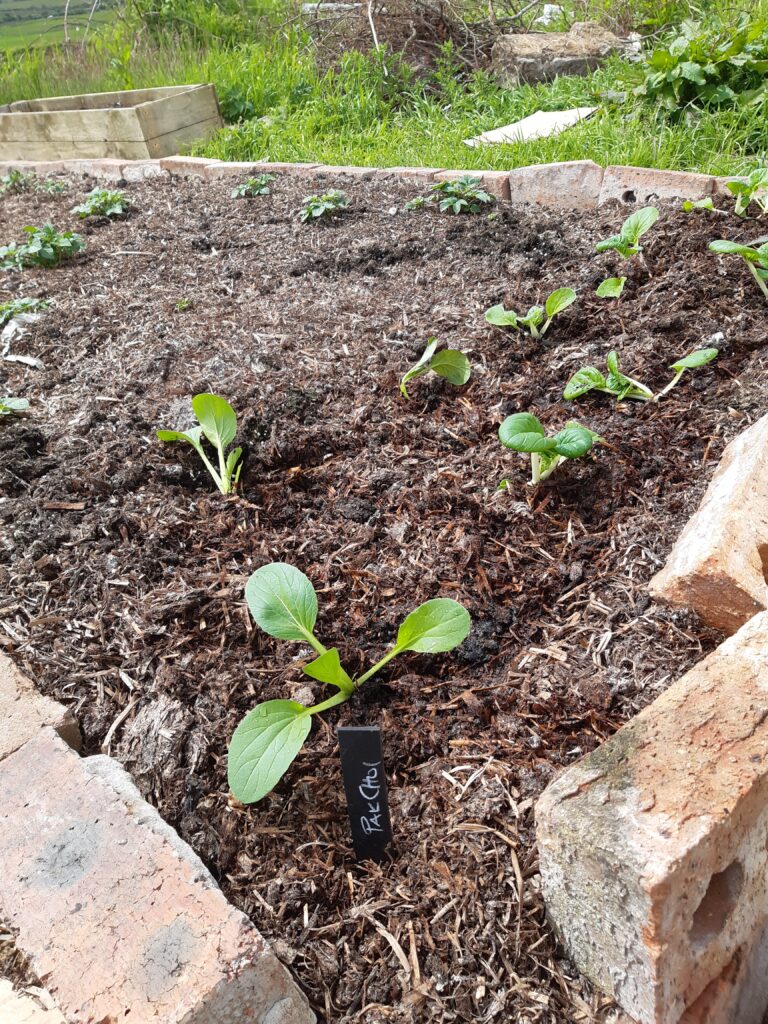
Pak Choi outside 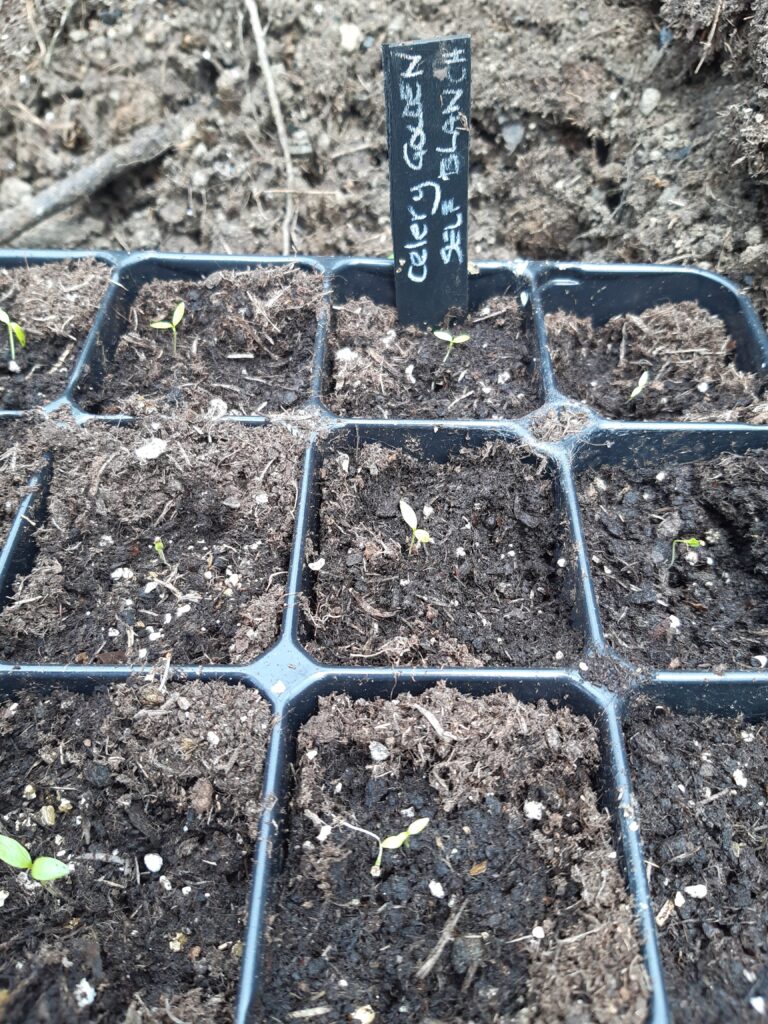
Tiny celery starts 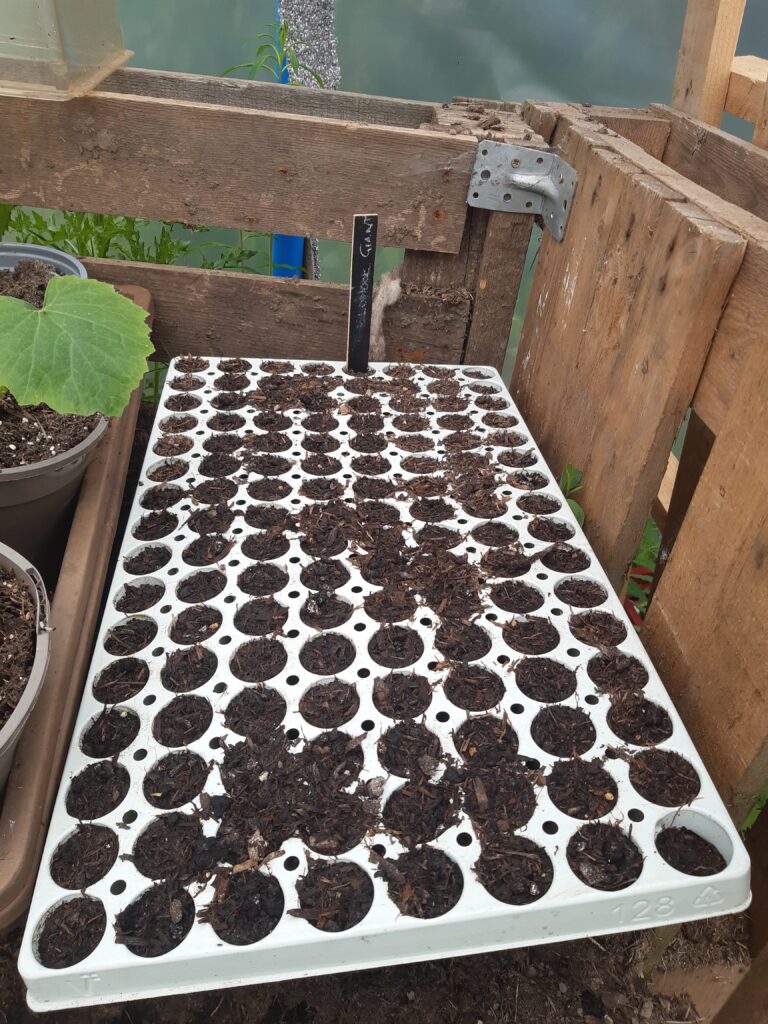
One tray of lettuce and another of spinach 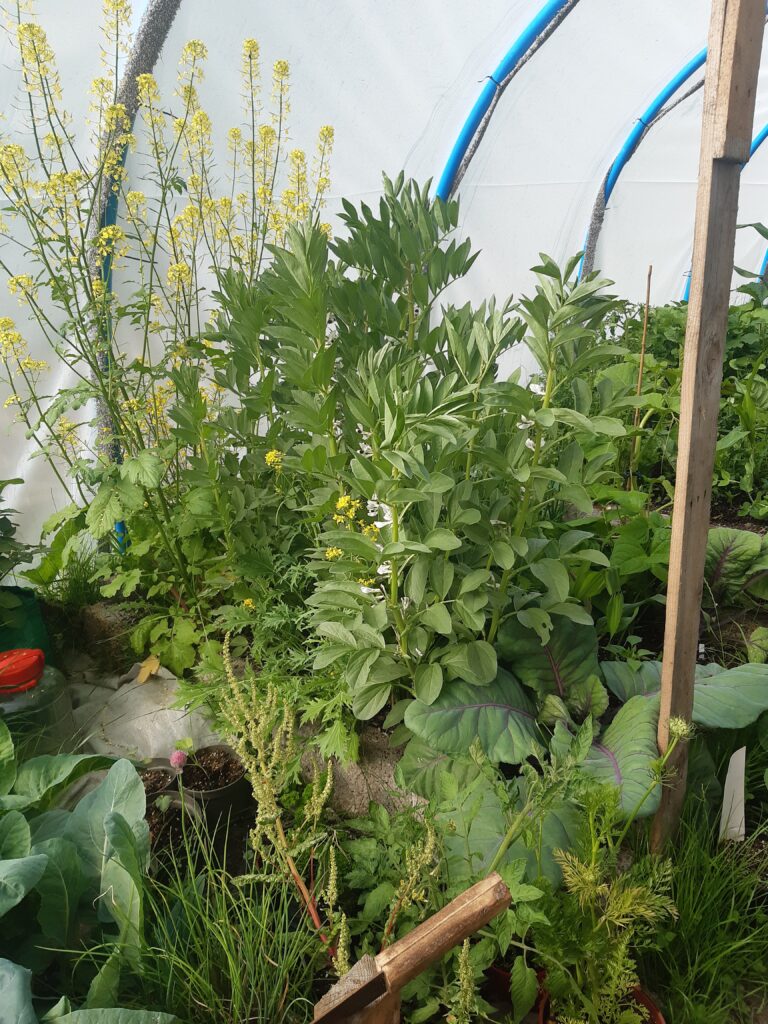
Broad beans now tied up 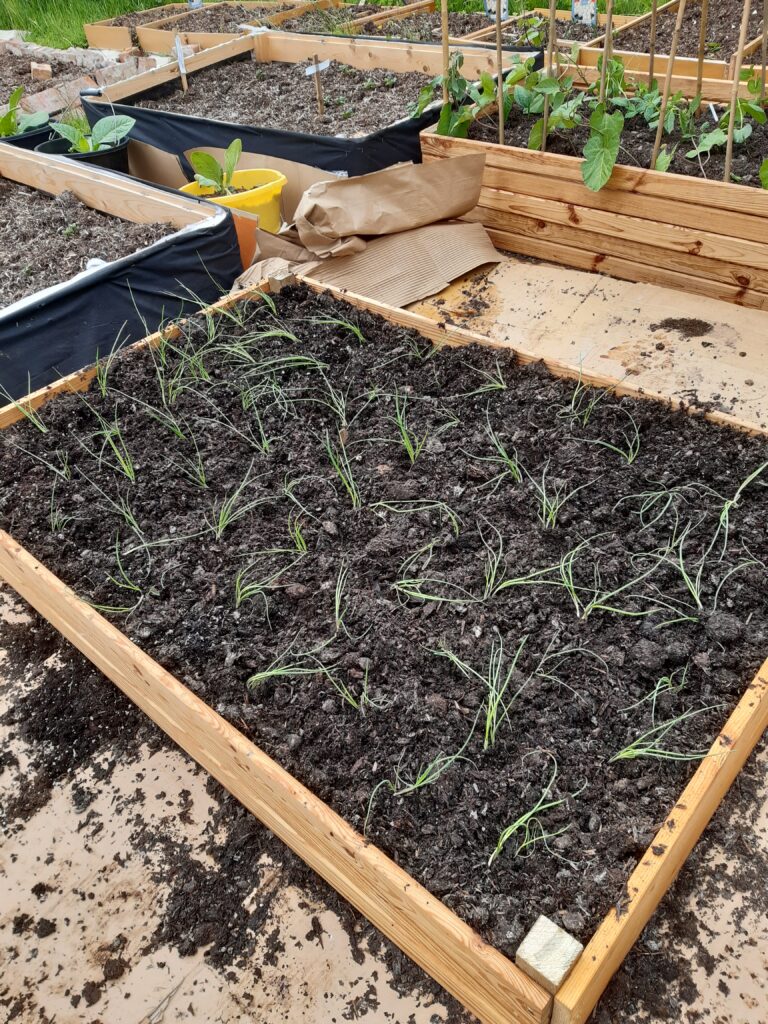
New onion bed

